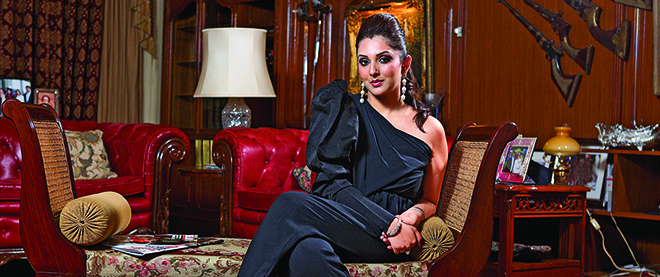Hello! Pakistan aims to show another side of the country, but don’t expect to see women in bikinis
Zahraa Saifullah could be the face of a new generation of Pakistani women: powerful and wealthy, yet happy to show a sliver of bare shoulder. Saifullah wants to bring this modern perception of Pakistan to the rest of the world and, as the publisher of the new Hello! Pakistan, she’s using international media to do it.
Asim Hafeez/The New York Times
Share

Zahraa Saifullah could be the face of a new generation of Pakistani women: powerful and wealthy, yet happy to show a sliver of bare shoulder. Saifullah wants to bring this modern perception of Pakistan to the rest of the world and, as the publisher of the new Hello! Pakistan, she’s using international media to do it.
With editions in Greece, Russia and Canada, to name just a few, Hello! magazine has now furthered its reach. Saifullah, 29, was approached by the media organization last summer to create a Pakistani version. Hello! Pakistan published its first issue this spring. It sold out in just three days.
The Hello! franchise is known for glossy spreads on royals and celebrities, but Saifullah has higher hopes for the South Asian edition. “One of our goals was to reshape Pakistan’s media image,” she says. “All that ‘fire and brimstone’ overshadows the real culture and feel of Pakistan.” Still, Hello! Pakistan is expensive at 500 rupees—around $5, enough for Pakistan’s poorest citizens to survive on for two days.
So far, Hello! Pakistan appears to focus more on achievement and philanthropy than who’s wearing what. The first issues of the magazine included profiles of actor Sean Penn and Pakistani-Canadian director Sharmeen Obaid-Chinoy, who won an Oscar this year for Saving Face, her documentary on Pakistani women left disfigured by acid attacks.
The wide disparity between rich and poor in Pakistan may explain part of its appeal. Houchang Hassan-Yari, fellow at the Centre for International and Defence Policy at Queen’s University, notes that U.S. TV show Dallas was hugely popular in the developing world. “They see the wealth, the unreal life for them, and it makes them dream about the possibility of getting out,” he says. “That is the attraction.” For many, Hello! Pakistan is pure aspiration. For Pakistan’s wealthier citizens, it offers tips on wedding planning and travel. The magazine’s ads reflect that. High-end retailers like L’Oreal and Mango are among the brands advertising in the new magazine.
Some Pakistanis have criticized Hello! as un-Islamic. And the magazine will struggle with societal standards—dictating, for example, how much skin can be shown on its covers. Saifullah says there aren’t any set publishing standards or regulations, but there is a strong conservative force in the region. “This is a society that is full of contradictions. You have very liberal females, and then you have those who do not let girls go to school,” Hassan-Yari says. “If you see groups protesting Hello! Pakistan, you shouldn’t be surprised.”
In December, Pakistani actress Veena Malik was shown nude on the cover of FHM India, outraging conservatives, particularly since “ISI” was printed on her arm, the initials of Pakistan’s controversial Inter-Services Intelligence spy agency. “I think we can get away with showing a bit of leg,” Saifullah says, “but you won’t be seeing our models in bikinis any time soon.”